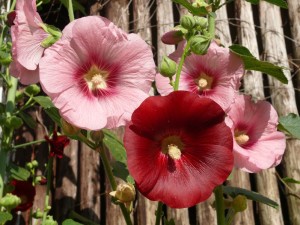These Gardening Tips Will Help You Distinguish Annuals From Biennials and Perennials
 You’ve decided to try a spring garden. You arm yourself with books from the library full of gardening tips for the novice, but some of the terms hardly seem fit for someone who’s never wielded a spade. From “hardening off” to understanding the difference between biennials and perennials, you could easily be scared off from your first garden before you’ve even tilled the soil.
You’ve decided to try a spring garden. You arm yourself with books from the library full of gardening tips for the novice, but some of the terms hardly seem fit for someone who’s never wielded a spade. From “hardening off” to understanding the difference between biennials and perennials, you could easily be scared off from your first garden before you’ve even tilled the soil.
While an array of new terms in a set of gardening tips can be a bit intimidating, they often describe simple processes or differences. While all those Latin terms won’t be tackled here, you can at least find out a little more about a few common gardening practices with complicated-sounding names.
Do annuals come back annually? Sadly, no. If you want a plant that will return each year, you’ll be shopping for a perennial species. Annuals need to be replanted each year, and biennials like hollyhock and even some vegetables live for just two years. There are many good choices for perennials and some require little care.
Aren’t all plants open-pollinated? While the term “open-pollinated” may make you wonder how other plants are reproduced year after year, this refers to plants that are pollinated by birds, butterflies and other insects, the wind and humans. As long as you save the seeds of your plants, the next year’s harvest will be just like that of the year before. Many open-pollinated plants are heirlooms, which have produced over a period of at least 50 years.
Hybrids, by contrast, are plants that have been bred from two different varieties to achieve a certain set of characteristics, such disease-resistance or better yield numbers. These will not return true to type the following year, so seeds must be purchased for each planting.
Is side-dressing something that’s used near lettuce plants? Side dressing is, in fact, a technique for adding fertilizer around the perimeter of a plant. It’s used to distinguish from broadcasting, in which fertilizer or seeds are cast by hand or by a spreading machine to cover a broad area.
What does “hardening off” mean? This is in reference to plants that have been started from seed inside but may struggle to survive when transferred to an outdoor garden. Hardening off refers to the process of taking seedlings outside for a few hours each day to help them become acclimated to the conditions of your yard.
Is it necessary to use plant markers? When you plant your first garden, it’s hard to imagine how much bigger your plants will grow and that you may forget in a few weeks when you were supposed to thin them out or add fertilizer to each type of plant. Using plant markers can help you give the right individualized care to each of your plants, and if you choose the right markers, you can enjoy them year after year.
When you’re ready to design your first garden, choose Kincaid Plant Markers. They’ll not only add a touch of sophistication and organization to your garden plot, but their rust-resistant design will provide you with year after year of their use.
